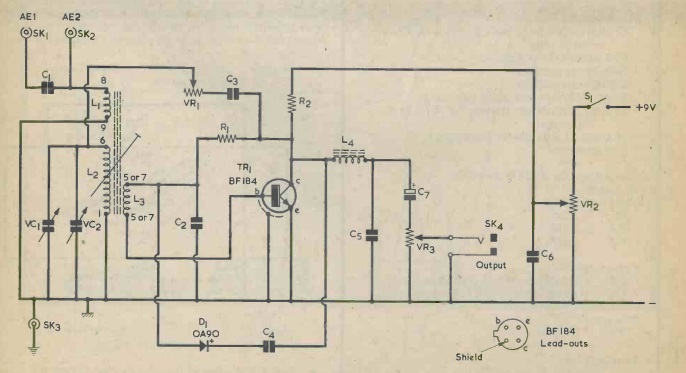 If Junior is looking for a fun science experiment involving some dangerous hazardous substances (both of which are readily available on Amazon or at almost any hardware store), then he or she can’t go wrong with this 1924 demonstration of how to make “smoke rings” from the November 1924 issue of Science and Invention.
If Junior is looking for a fun science experiment involving some dangerous hazardous substances (both of which are readily available on Amazon or at almost any hardware store), then he or she can’t go wrong with this 1924 demonstration of how to make “smoke rings” from the November 1924 issue of Science and Invention.
You start by getting some ammonia (called “ammonia water” in this diagram) and some good ol’ Hydrochloric Acid (also known as muriatic acid). Arrange them in bottles and tubes as shown here. To avoid spillage, you need to make sure the ends of the tubes are level with the level of the liquid in the bottles. The fumes combine in the box to form ammonium chloride, and the tiny crystals form a thick white “smoke”. When you tap on the back of the box, a smoke ring emerges.
Note: These chemicals really are dangerous, so use great caution in carrying out the experiment. In particular, we recommend doing it outside, or in a room with lots of ventilation.
Some links on this page are affiliate links, meaning this site earns a small commission if you make a purchase after using the link.
 Fifty years ago this month, the November 1974 issue of Radio Constructor showed how to put together this simple one-transistor regenerative receiver. The transistor was “reflexed” to allow a bit more gain, but it still required a crystal earphone. For a bit more volume, an optional AF amplifier using an additional transistor was recommended, but the set could be built either way.
Fifty years ago this month, the November 1974 issue of Radio Constructor showed how to put together this simple one-transistor regenerative receiver. The transistor was “reflexed” to allow a bit more gain, but it still required a crystal earphone. For a bit more volume, an optional AF amplifier using an additional transistor was recommended, but the set could be built either way.














